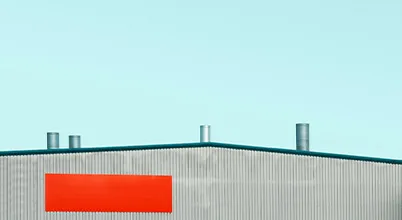Why would tens of thousands of people – including a dozen Autodeskers – visit Glasgow, Scotland last month? It’s not for the whiskey or the weather. In early November, we attended the U.N. Climate Change Conference known as COP26, a global gathering aimed at fast-tracking a net-zero future. Like anyone with a keen interest in the outcome, I’ve heard critiques that the conference failed to produce urgent action. But after attending more than 60 hours of meetings and events, I walked away feeling as optimistic as ever. Here are three reasons to believe society is moving in the right direction when it comes to managing our greenhouse gas emissions.
No longer up for debate: Low carbon is the future
From our partners in the private sector to developing and developed countries, there’s broad agreement that the world is transitioning to a low-carbon future. The discussion today is focused on how we get there.
On the public sector side, incremental progress is being made toward the goal of keeping warming below 1.5° C. And the consensus-building process set out by the Paris Agreement is working. In Paris in 2015, nations agreed for the first time to national emissions reduction targets. This year, they raised the bar even higher for themselves. Are those reductions enough? Not yet, but nations have set the stage for continual progress.
New ambitious commitments are trending
One of our COP26 goals was to engage with our customers and partners on joint and potential contributions to sustainable outcomes. We had productive conversations about how we can work together to drive progress in the industries we serve, from the built environment to industrialized manufacturing.
I was struck by the scale of ambition. Take Trane Technologies, for example. Trane is one of the world’s largest providers of heating, ventilation, air conditioning, and refrigerated transportation. Trane has set a goal of reducing its customers’ greenhouse gas emissions (GHG) by a billion metric tons by 2030. They are at the forefront of innovation by focusing on their customers’ emissions, and we are beginning to explore how we can help our customers scale their sustainability impact, too.
Trane, like other companies setting aspirational targets, hasn’t worked out exact details about how they’ll get there. But that’s where collaboration and technology will come into play. We look forward to working with companies like Trane on strategies that apply data and insights to put sustainability goals within reach. At Autodesk, our greatest opportunity to impact change at scale is to help our customers achieve their sustainability goals. But we, too, are stepping up our commitments. Earlier this year, we announced that we’ve achieved net-zero operations and set new science-based targets to further reduce our emissions over the next decade.




Digital transformation supercharges solutions
On my final day in Glasgow, I sat on a panel with other sustainability leaders at leading companies to discuss how we turn digital technology innovation into climate action. The major theme that emerged was the power of data. Data gives us the ability to assess, track, measure, and manage carbon emissions, so we—as a global community—can make better decisions and hold ourselves accountable. Perhaps most encouraging was how each speaker tied sustainability to good business strategy because stakeholders are demanding it.
During the panel, Daniel Schmid of SAP shared how they work with companies to embed sustainability tracking into financial and non-financial reporting. Gillian Harrison of Whitefox Technologies LTD explained how data insights have helped ethanol plants reduce their emissions by as much as 50%. And Scott Tew from Trane talked about the importance of using automation, sensors, and data analytics to connect more buildings to sustainable solutions.
«The old way of thinking is asking what’s the most efficient piece of equipment I can buy. That’s behind us,» said Tew, Vice President of Sustainability at Trane. «We now have to think about the building as a whole—all the steps needed within a system to decarbonize a building.»
COP26 was an incredibly important moment, but progress towards a more sustainable world is happening in every corner of the globe every day. And it’s only accelerating. In the weeks since I returned from COP26, we’ve begun building on the momentum from our conversations. We’re sharing our Impact strategy to our employees, partners, and customers. And as our customers push the pace of their carbon reduction goals, we’ll meet and lead them every step of the way. Because we don’t wait for progress—we design and make it.













